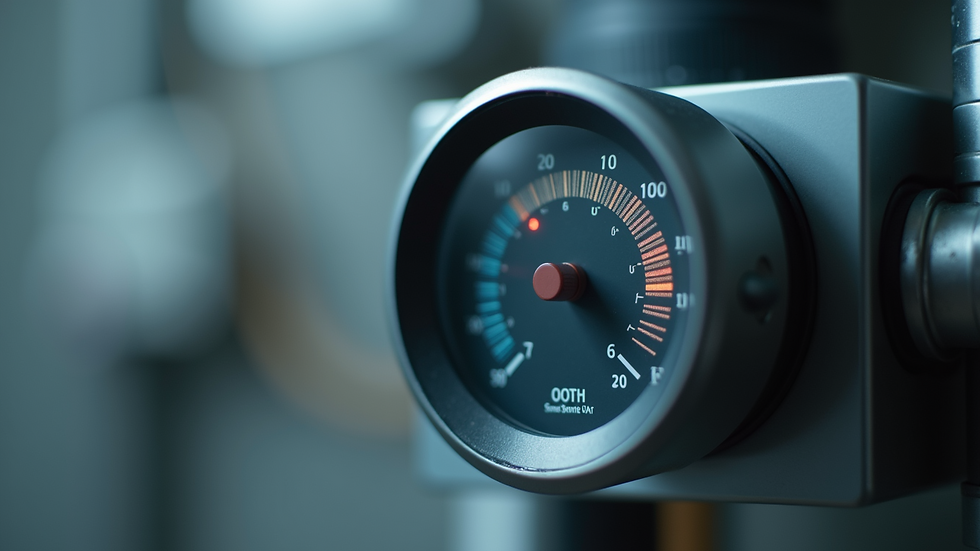Revolutionising HVAC Management with Smart Monitoring Systems
- tass peters
- 4 days ago
- 3 min read
In the modern business landscape, efficient heating, ventilation, and air conditioning (HVAC) systems are crucial. With rising demands for optimal work environments, smart monitoring systems have emerged as transformative solutions. These technologies allow businesses to remotely monitor and manage their HVAC systems in real-time, using the Internet of Things (IoT).
By integrating smart monitoring systems, companies can boost operational efficiency and receive instant alerts about potential issues. This proactive approach helps prevent minor problems from escalating into costly repairs. This article delves into how smart monitoring systems reshape HVAC and refrigeration management.
Understanding Smart Monitoring Systems
Smart monitoring systems showcase real-time insights that track HVAC and refrigeration performance. Equipped with various sensors, these systems gather data and relay it to a centralized platform for analysis.
Key components include:
Temperature Sensors: Monitor the environment to ensure optimal conditions.
Humidity Sensors: Control moisture levels, crucial for reducing mold and maintaining product integrity.
Energy Consumption Monitors: Track energy use to identify potential savings.
For example, a study showed that implementing temperature sensors could lead to a 20% reduction in energy costs for commercial properties.

Benefits of Smart Monitoring Systems
Enhanced Efficiency
Smart monitoring systems significantly improve HVAC and refrigeration efficiency. Continuous performance tracking allows businesses to quickly spot inefficiencies. For instance, a company that utilized a smart monitoring system was able to decrease energy consumption by 15% by adjusting operation schedules according to usage patterns.
Cost Savings
The potential for cost savings is substantial. Early detection of issues can lead to fewer costly repairs and minimized downtime. An example includes a restaurant chain that saved over $30,000 in annual energy costs through efficient monitoring practices.
Improved Compliance
For industries with strict regulations, smart monitoring eases compliance. Systems can maintain detailed records of temperature and humidity, simplifying audits and reducing the risk of fines. For instance, a pharmaceutical company maintained compliance with FDA regulations by systematizing their environmental monitoring.
Remote Access and Control
Remote access is a critical feature of smart monitoring systems. Facility managers can retrieve real-time data from their mobile devices, allowing for prompt decisions. For instance, a logistics company managing multiple warehouses can swiftly adjust temperature settings based on the specific needs of each location.

Implementing Smart Monitoring Systems
Assessing Your Needs
Businesses should begin their journey by assessing their specific needs. This involves reviewing current HVAC systems to pinpoint areas for improvement and determining key performance indicators (KPIs) for monitoring.
Choosing the Right System
Selecting an appropriate smart monitoring solution is essential. Businesses should weigh factors such as scalability, user-friendliness, and integration capabilities. Research shows companies that invest in systems fitting their operational needs can see a return on investment within 1-2 years.
Training and Support
To maximize the benefits, companies must invest in training for their staff. Comprehensive training ensures employees effectively utilize the new system. Ongoing support can also address any challenges that come up during the implementation process.
Future Trends in Smart Monitoring for HVAC
Technological advancements are steering the future of smart monitoring systems. New trends include the integration of artificial intelligence (AI) and machine learning, which can significantly enhance predictive maintenance. For example, AI-driven analytics can help predict equipment failures with 90% accuracy, enabling businesses to take action before breakdowns occur.
Moreover, with increasing pressure on sustainability, businesses will look for systems that optimize performance and align with eco-friendly goals. According to a recent report, the market for sustainable HVAC systems is expected to grow by 30% by 2026.
The Bottom Line
Smart monitoring systems are reshaping the management of HVAC and refrigeration systems. They provide valuable real-time insights, boost efficiency, and enable remote controls. The investment is not just about technology; it enhances decision-making and improves financial outcomes.
In an era where efficiency is key, embracing smart monitoring systems is more than a trend. It is a strategic move towards a sustainable and cost-effective future. Investing in these systems positions businesses to thrive in a competitive market, proving that every degree truly matters.


